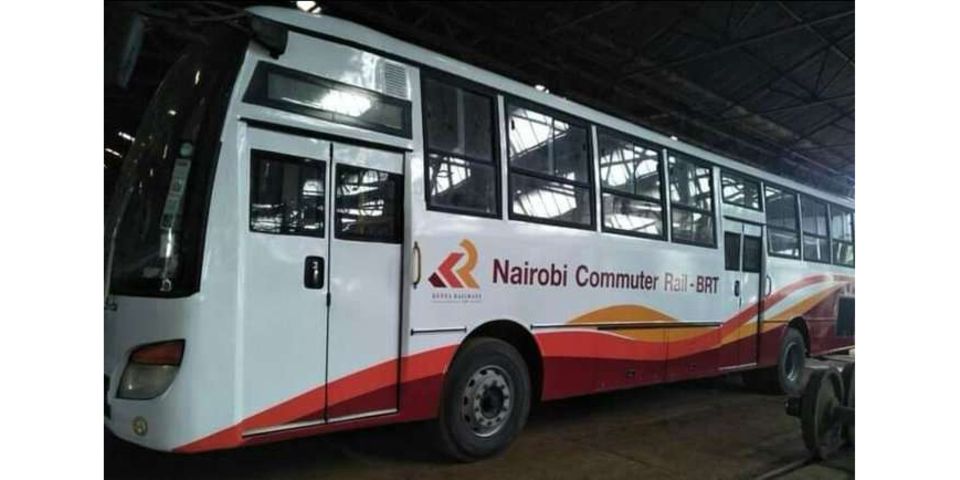Anxiety has gripped the residents of Nairobi as the government prepares to roll out an ambitious public transport system aimed at bringing back order in the capital while improving the commuting experience.
The Commuter Rail Project, a collaboration of the Kenya Railways Service and the Nairobi Metropolitan Services (NMS), which is planned for launch this week by President Uhuru Kenyatta, has been hailed as a game changer.
To get to town, commuters will have the option of using trains known as Diesel Mobile Units (DMUs) that can carry up to 300 passengers to the Nairobi railway station. They will then use the Bus Rapid Transport (BRT) for the last mile into the central business district. A DMU is a multiple-unit train powered by on-board diesel engines whose locomotives are conjoined.
The project, which will use an initial 11 DMUs imported from Spain, is the first in a series that is expected to culminate in the creation of a railway city and five BRT corridors, which will allow seamless mass transport beginning June next year.
The Nairobi Expressway, which will run from Mlolongo all the way to the James Gichuru junction in Westlands and whose construction is ongoing, will also have special BRT lines. The government is still looking for funding for the remaining BRT lines on the plan.
Once all the projects under the plan are complete, Nairobi will have an integrated commuter system comprising a BRT, a monorail and an underground rail system. They will all converge at the Railway City, a multimodal, transit-oriented, urban development covering 200 acres around the current Nairobi Railway Station.
“The strategic location of the Nairobi Station positions it perfectly to be an iconic nerve centre for the Nairobi multimodal transport system with a new worldclass central station incorporating mixed-use commercial developments, hotels and intermodal facilities,” says Kenya Railways about the city. “The Nairobi Railway City will bring into play a fresh alternative with regard to office, commercial, residential space, thus reducing pressure on general prices of such premises within the CBD.”
The NMS and Kenya Railways have been posting teasers on their social media pages the whole week on what Nairobians should expect ahead of the launch.
“Efficient, affordable worldclass transport options on the way. Park and ride the train. Forget traffic during rush hour,” NMS said in one of its tweets meant to publicise the new service.
“Rome was not built in a day. The important thing is we have taken a step in the right direction, but we have a long way to go. A lot more resources will be required to get to optimal services, the first step is the hardest but we have to take it,” tweeted Housing and Urban Development Principal Secretary Charles Hinga.

What is causing anxiety, however, is a plan by the NMS to ban all matatus from accessing the CBD to give way for the launch of a decongestion plan by President Kenyatta later in the month.
NMS Director General Mohammed Badi in September said that matatus will not be allowed to enter the CBD beginning November. The only public service vehicles that will be allowed into the CBD are BRT buses operated by Kenya Railways, which will pick up passengers from dropoff points at the entrances to the city, where matatus will drop people.
Final touches
The final touches are currently being done for a bus stop at the Lunar Park, where commuters from Mombasa, Lang’ata and Ngong roads will be dropped.
Those coming from Thika Road will be dropped off at Globe Cinema while those coming from Waiyaki Way will alight along Desai Road.
Commuters from Eastlands will be dropped off at Muthurwa while those coming from upcountry destinations will head for the Machakos “Airport”.
In preparation for the new transport system, the NMS has renovated old bus stops and created new ones.
While it looks like an excellent plan on paper and a new cap on the list of achievements for the Badi-led NMS, getting matatus out of the CBD will be the Major-General’s biggest test yet.
During an interview on Citizen TV on Wednesday, Maj-Gen Badi insisted that his plan to decongest the city is still on course as promised.
“The plan is for all PSVs, including bodabodas. We will have six termini for all PSVs, where they will be coming and returning to their routes without entering the CBD,” he said.
Full throughout
“We will have trains from all the directions of Nairobi. We have already started with the Embakasi one and it is full throughout, from 5am. From there, we will have BRT buses that will drop passengers to the CBD or to the bus termini if they are to continue with their journeys from Nairobi,” he said.
It is estimated that there are 25,000 PSVs currently in operation across Nairobi. This, according to Namata, contributes 80 per cent of the capital’s traffic, with 16,000 matatus accessing the CBD every day.
Despite the introduction of saccos, all matatus operate on a free market, with little control and their sheer numbers create congestion in the CBD.
Similar plans to get rid of them in the past have failed.
It is President Kenyatta as Minister for Local Government in 2008 who made the first attempt to ban matatus them from the CBD. Former Nairobi governor Evans Kidero and current city chief Mike Sonko too have tried and failed.
The last such attempt in January last year created a transport crisis in the city, as matatus ganged up and closed all entrances and exits out of the CBD.
The result was a traffic snarlup that lasted an entire day, forcing Governor Sonko to reverse the ban.
Like they have done in the previous attempts to force them out of the CBD, matatu operators have dared Maj-Gen Badi to make good his threat.
“We are ready to help decongest the city, but you cannot do it without involving us as stakeholders,” said Matatu Owners Association chairperson Simon Kimutai.
Credit: Source link